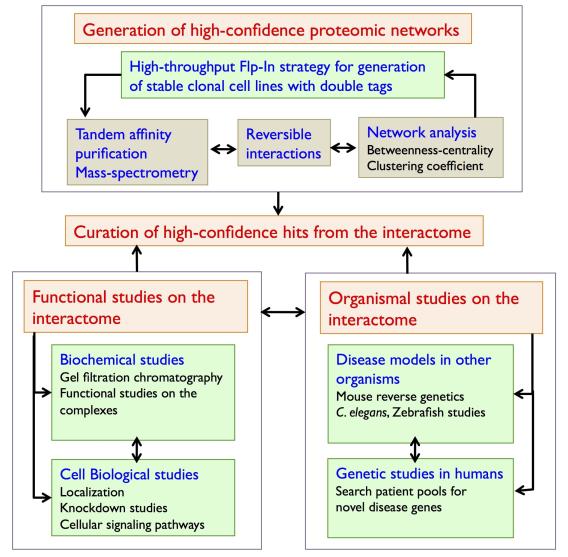Understanding the principles underlying the spatio-temporal organization of signaling in the primary cilium would help us address the central question of why cells utilize these singular organelles as detection and signal-transducing machines for extracellular cues. Our ongoing studies have pointed us to new trafficking pathways and receptors fundamentally important in ciliary signaling (see section on research background). In particular, we have discovered an orphan ciliary GPCR that is targeted to cilia through a novel Tulp3-IFT-A dependent process, functions as a negative regulator of Shh signaling, and is itself downregulated by Shh in a feedback mechanism. Dissecting the mechanisms governing the trafficking and regulation of this GPCR, and extending these emerging paradigms to other ciliary GPCRs, will reveal important insights into the role of cilia in establishing this unique signaling compartment. Conceptually, the regulation of GPCR localization to cilia could involve the following events: (a) trafficking to the cilia, (b) activation and downstream signaling, (c) desensitization by regulated/tonic mechanisms, (d) internalization and sorting in the endosomes, and (e) transcriptional feedback mechanisms for regulating cellular levels. Our future research aims at developing a multi-level functional proteomic approach to understanding ciliary signaling inclusive of all the aforementioned regulatory steps, and dissecting the signaling pathways powered by GPCRs, both in the cellular and organismal contexts, in order to understand their function in tissue homeostasis and disease.
Our research involves: (1) building high-confidence mammalian protein-protein interaction networks using unbiased TAP/MS-based methods, (2) cross-validating the importance of these interactions using biochemical, cell biological and reverse genetic approaches, (3) analyzing the interactors for human disease associations, (4) designing strategies for deconstructing the global networks into smallest functioning units, and (5) detecting evolving network modules. Our ongoing studies on the extended tubby family interactome highlight the significance of this general experimental framework for discovering important connections in cellular networks and human diseases, arising from disruption of the primary cilia (ciliopathies). Our long-term goal is to utilize this general strategy for building large-scale unbiased protein-protein interaction networks important in human health and disease (Figure 1).
Currently the research projects in our lab include:
- Mechanisms of trafficking in and out of cilia
- Ciliary signaling in development and disease.
- Neural tube development
- Craniofacial development
- Limb bud formation and patterning
- Endochondral bone development
- Intramembranous bone development
- Kidney cystogenesis
- Cerebellar development
- Ciliary signaling and cancer
Details of each project are provided in the respective sections.
 Figure 1. General framework for studying cellular networks impacted in ciliopathies. This general strategy is applicable for studying relevant cellular networks in the context of any cellular process.
Figure 1. General framework for studying cellular networks impacted in ciliopathies. This general strategy is applicable for studying relevant cellular networks in the context of any cellular process. Current projects in Mukhopadhyay Lab
Saikat talks about current projects while welcoming incoming class of 2023.